Drifter Blu-ray Movie
HomeDrifter Blu-ray Movie 
Kino Cult #6Kino Lorber | 1974 | 97 min | Not rated | Feb 20, 2024
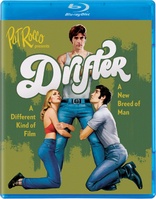
Movie rating
6.9 | / 10 |
Blu-ray rating
| Users | 0.0 | |
| Reviewer | 3.0 | |
| Overall | 3.0 |
Overview
Drifter (1974)
A bisexual hustler tries to find a niche in the disparate worlds of straights and gays. He begins exploring relationships with members of both worlds, but his affairs do not go well.
Starring: Joe Adair, Inga Maria, Bambi Allen, Dean Shah-Kee, David Russell (II)Director: Pat Rocco
| Drama | 100% |
Specifications
Video
Video codec: MPEG-4 AVC
Video resolution: 1080p
Aspect ratio: 1.37:1
Original aspect ratio: 1.37:1
Audio
English: DTS-HD Master Audio 2.0
Subtitles
English SDH
Discs
Blu-ray Disc
Single disc (1 BD)
Packaging
Slipcover in original pressing
Playback
Region free
Review
Rating summary
| Movie | 3.0 | |
| Video | 4.0 | |
| Audio | 4.0 | |
| Extras | 2.5 | |
| Overall | 3.0 |
Drifter Blu-ray Movie Review
Reviewed by Dr. Svet Atanasov March 19, 2024Pat Rocco's "Drifter" a.k.a. "Two Way Drift" (1974) arrives on Blu-ray courtesy of Kino Lorber. The supplemental features on the release include new audio commentary by critic Finley Freibert and several short films. In English, with optional English SDH subtitles for the main feature. Region-Free.
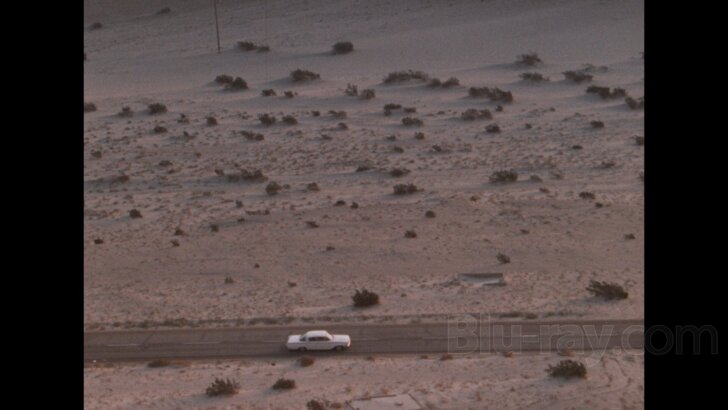
The Beat Generation novelists spent a lot of time describing the adventures of characters like the one Joe Adair plays in Pat Rocco’s film. Some of these characters were their alter egos, just slightly improved, or damaged a bit more to appear more intriguing. Some were fictional characters that the novelists wanted to discover, but never did. They were always on the move, passing through the South, going up and down California’s massive coastline, occasionally reaching Utah, Idaho, and the Pacific Northwest. Some explored the big cities back East. They were junkies, thieves, hustlers, hippies, and drunks, and many of them had lengthy police records. They were not orphans who grew up alone. They had families and knew people who loved them, but this was the life they had chosen to live. They wanted to be alone so that they could be free.
Contrary to what they claimed, or people they knew said about them, virtually all of these characters self-destructed. First spiritually, then physically. The ultimate form of freedom that they pursued transformed them into permanent loners who could not grow roots, which is why they drank heavily and took drugs. It is how they managed their loneliness and numbed the pain that often emerged from it, but once their bodies became addicted to the booze and drugs, it was only a matter of time before they gave up. They had to keep moving to remain free, so when they stopped doing it, they quickly lost the desire to live. The few exceptions were the novelists and poets who, while following the characters in their writings, kept moving a little longer.
Adair calls himself Drift. Somewhere in the desert, in front of a cheap diner, he is picked up by a stranger heading to L.A. They talk a bit, flirt too, but Drift quickly falls asleep, and several hours later wakes up as they begin to enter the city. Before they part ways, the stranger hands Drift a business card so that he can use his name to contact a woman who would help him get a job – if he needs one. Half an hour later, after visiting an adult bookstore and then walking around aimlessly, Drift is picked up by another stranger who invites him to his place and tells him that he can spend the night there if he lets him make love to him. Drift likes the offer and on the following day meets the stranger’s roommate, a hooker, who immediately warms up to him. In a nice administrative building in the city, Drift then meets the woman who was recommended to him by the first stranger, and after initially misunderstanding each other, she offers him a job -- a dirty one. Drift also goes out on a date with a girl he meets in the building, and occasionally fantasizes about another stranger who may have been in love with him. Eventually, while meeting his obligations, Drift is served a massive dose of L.A. reality that scars him forever.
Rocco’s film easily could have been a cinematic adaptation of an unfinished novel by Neal Cassady or Peter Orlovsky. It does not have a conventional beginning or end, and Drift has a mindset that helps him understand his reality a lot like Cassady and Orlovksy did theirs, absorbing the good and the bad that emerges from it with as little preparation as possible. It is defined by the overlapping of various moods, most of which are described in Cassady and Orlovksy’s work.
What could have made Rocco’s film very special is an abundance of footage from L.A. and the surrounding areas. There is some, but it is not enough to give the viewer an authentic sense of how L.A. changes its identities as each day and night begins. On the other hand, the film very quickly and effectively reveals how easy it is for newcomers like Drift to be exploited in L.A. as they become overwhelmed by its sheer size and relentless rhythm of life. To survive there, Drift must quickly adjust, avoiding judgment errors and dangerous chameleons with years of experience.
The direction is uneven and a bit rough. However, it feels right for this type of film because it enhances its Beat qualities.
Drifter Blu-ray Movie, Video Quality 
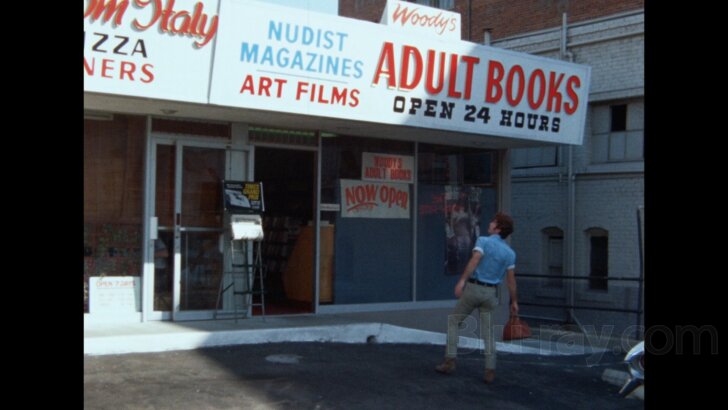
Presented in an aspect ratio of 1.37:1, encoded with MPEG-4 AVC and granted a 1080p transfer, Drifter arrives on Blu-ray courtesy of Kino Lorber.
The release introduces a recent 2K restoration of the film from the original 16mm A/B negatives, which are preserved by the UCLA Film and Television Archive. All visual have a solid organic appearance. However, it is quite a stretch to describe the work that was done before the film was transferred to Blu-ray a 'restoration'. Why? There are quite a few surface imperfections, plus some minor image stability issues, and while they are never even remotely distracting, a proper restoration would have addressed them. Also, there are some very obvious fluctuations in terms of density that affect delineation and clarity, though it is quite easy to tell that most are inherited. Color balance is good. However, expect to see traces of aging that affect some primaries and supporting nuances. The best news is that there are absolutely no traces of problematic digital corrections. All in all, despite some rougher spots, I think that the overall quality of the presentation is quite nice. (Note: This is a Region-Free Blu-ray release. Therefore, you will be able to play it on your player regardless of your geographical location).
Drifter Blu-ray Movie, Audio Quality 
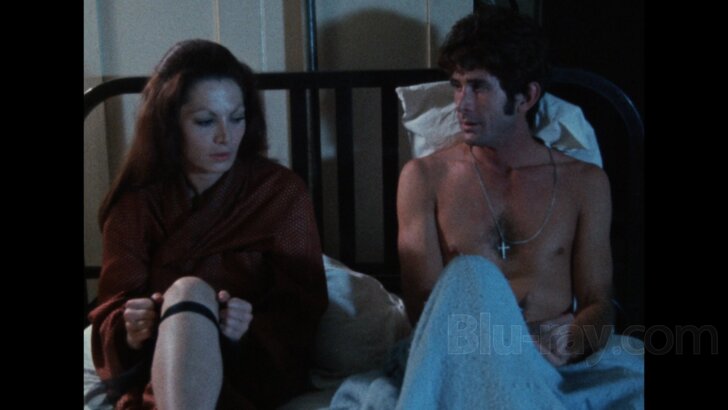
There is only one standard audio track on this Blu-ray release: English DTS-HD Master Audio 2.0. Optional English SDH subtitles are provided for the main feature.
All exchanges throughout the film are very easy to follow. However, as you could probably guess, the soundtrack incorporates a lot of organic sounds and noises and there are no notable dynamic contrasts. As a result, clarity could fluctuate a bit, though never enough to cause issues. Elsewhere, the audio is not always nicely rounded. There are no audio dropouts or distortions, but in a few places some extremely light background hiss can be heard.
Drifter Blu-ray Movie, Special Features and Extras 
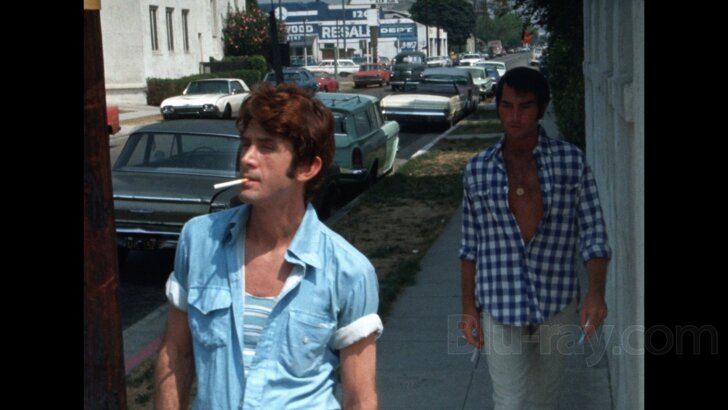
- Commentary - this exclusive new audio commentary was recorded by critic Finley Freibert.
- Short Films - the following short films, all of them remastered, were directed by Pat Rocco:
1. Autumn Nocturne (25 min).
2. A Matter of Life (15 min).
3. Strip Strip (4 min).
4. Sunny Boys (4 min).
- Cover - a reversible cover with vintage poster art for Drifter.
Drifter Blu-ray Movie, Overall Score and Recommendation 
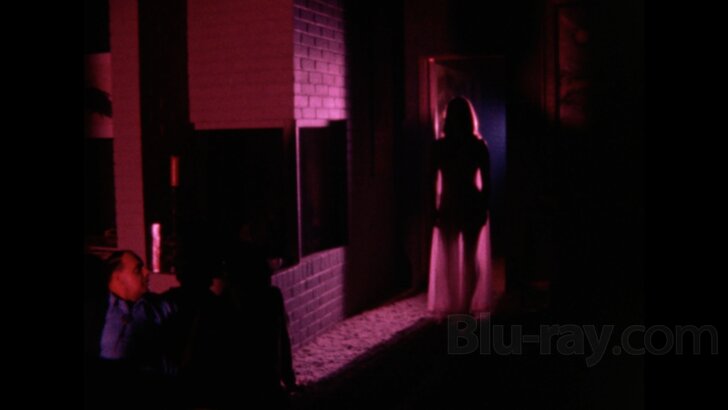
Drifter easily could have been a cinematic adaptation of an unfinished novel by Neal Cassady or Peter Orlovsky. It has a classic Beat protagonist, and it is defined by the overlapping of various moods, most of which are described in Cassady and Orlovksy's work. I think that it could have had a lot more footage from L.A. so that it works as a great time capsule, but to get it, it would have had to be a much bigger project, too. If its subject appeals to you, consider picking up this release, which is sourced from a somewhat rough but good recent 2K master.
Similar titles
Similar titles you might also like

The Bed and How to Make It!
Bundle
1966

Ken Park
2002

Nude in Charcoal
Bundle
1961

Love Scenes
Ecstasy
1984

Impossible Object
L'impossible objet / Story of a Love Story | Indicator Series | Limited Edition
1973

Grand Jeté
Slipcover in Original Pressing
2022

Emanuelle in Bangkok
Emanuelle nera: Orient reportage
1976

Supernova
2020

Full Body Massage
1995

Emanuelle and the White Slave Trade
La via della prostituzione
1978

Went to Coney Island on a Mission From God… Be Back by Five
1998

Marfa Girl
2012

Coming Apart
1969

A Woman for All Men
Part Time Wife
1975

Marfa Girl 2
2018

Amore Libero - Free Love
The Real Emanuelle
1974

Blonde on a Bum Trip
Slipcover in Original Pressing
1968

Kamikaze Hearts
1986

Annunciation
2014

Love Hunter
ラブ・ハンター 恋の狩人 / The Nikkatsu Erotic Films Collection
1972